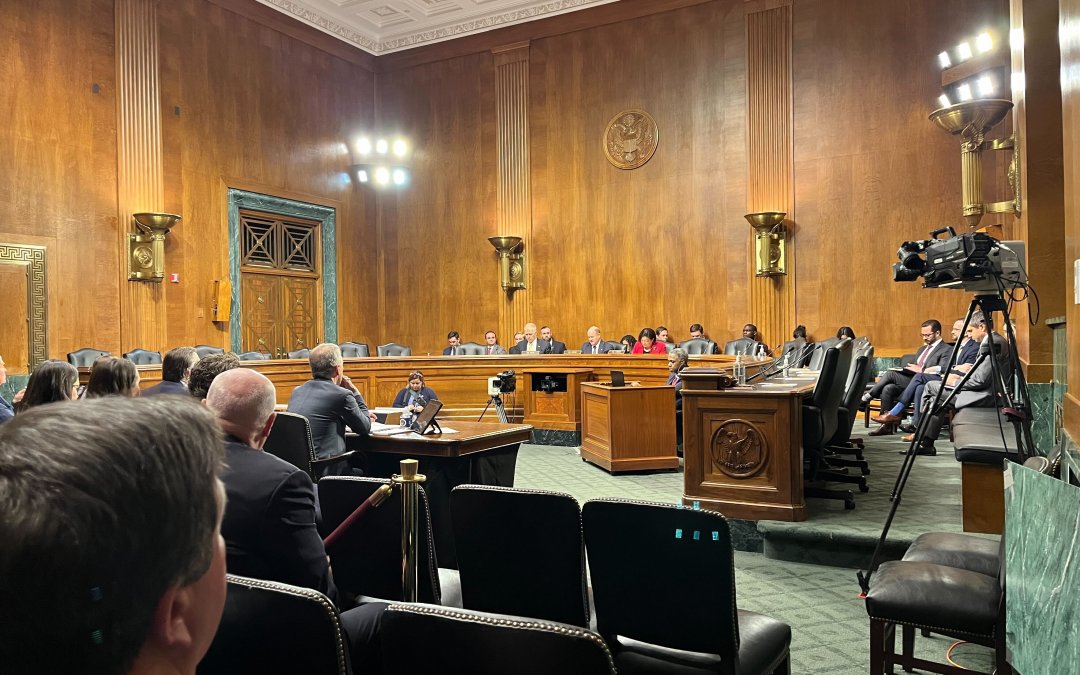WASHINGTON – Intellectual property experts told Congress members on Tuesday that the Patent Eligibility Restoration Act (PERA) is essential to encourage more inventors to apply and get their patents approved, adding that the act would benefit American innovation and businesses.
PERA aims to streamline the U.S. patent system by placing clearer guidelines around what is and isn’t eligible for patenting. In the Senate Intellectual Property Subcommittee hearing, experts emphasized disallowing patents on naturally occurring phenomena, like genes used during diagnostic and genetic testing.
“PERA will return eligibility to important inventions,” said Intellectual Property Subcommittee chair Rep. Chris Coons (D-Del.). “It will also make clear what is not patent eligible.”
Efforts to get PERA passed grew out of two Supreme Court decisions, Mayo Collaborative Services vs. Prometheus Laboratories in 2012 and Alice Corporation vs. CLS Bank International in 2014, which placed severe limitations on the ability of inventors to be granted patents.
Many intellectual property experts have criticized the decisions, citing that they have lowered the amount of patents being issued to new inventors. Professor and witness Adam Mossoff cited that, between 2014 and 2019, there was a 1,056% increase in the number of decisions finding ineligible patent claims and a 914% increase in the number of invalidated patents.
“These numbers are striking,” Mossoff said. “They are undeniable confirmation that the Alice/Mayo inquiry caused revolution in the U.S. patent law in ways never before seen by either inventors or lawyers.”
The majority of witnesses said they believed that PERA is the solution to these unprecedented decreases in new patents.
Former Under Secretary of Commerce for Intellectual Property Andrei Iancu argues that they provide much-needed guidance for businesses to know what is patentable.
“Congress needs to create clear rules,” Iancu said. “Whatever those rules may end up being after legislative debate, at least the public deserves to know what the rules of the road are.”
Witnesses told lawmakers they look forward to how PERA could benefit the biotechnology industry. Many areas of biotechnology use patented human genes as benchmarks for diagnostic and genetic testing. By not allowing human genes to be patented, some witnesses believe that more inventors will have the ability to create companies and, therefore, competition in their own biotechnology field, lowering costs.
Personalized medicine is one area of biotechnology that some expect to see increased access to following the implementation of PERA. Mike Deem, a scientist, inventor and biotech entrepreneur, said that the policy will allow personalized medicine providers to “treat better at lower cost.”
While increased access to human genes may decrease costs for some forms of biotechnology, some experts argue that it’ll increase others in the process.
The BRCA test uses patented human genes as biomarkers to test if a patient has an increased risk of getting breast cancer. If PERA is put into law, the genes used for this testing would no longer belong to the creators of the test, complicating the process.
“The patent system does now and should prevent the protection of inventions,” said witness Richard Blaylock, “but not mere discoveries of information.”
The vague PERA guidelines were designed to allow judges to use their own interpretations when deciding whether or not something is eligible for a patent.
Leaving patent eligibility up to judges is exactly what many lawmakers believe is necessary to continue innovation and restore the U.S. patent system.
“The Patent Eligibility Restoration Act is needed to restore clarity, reliability, and predictability to our vital U.S. patent system,” Coons said.


